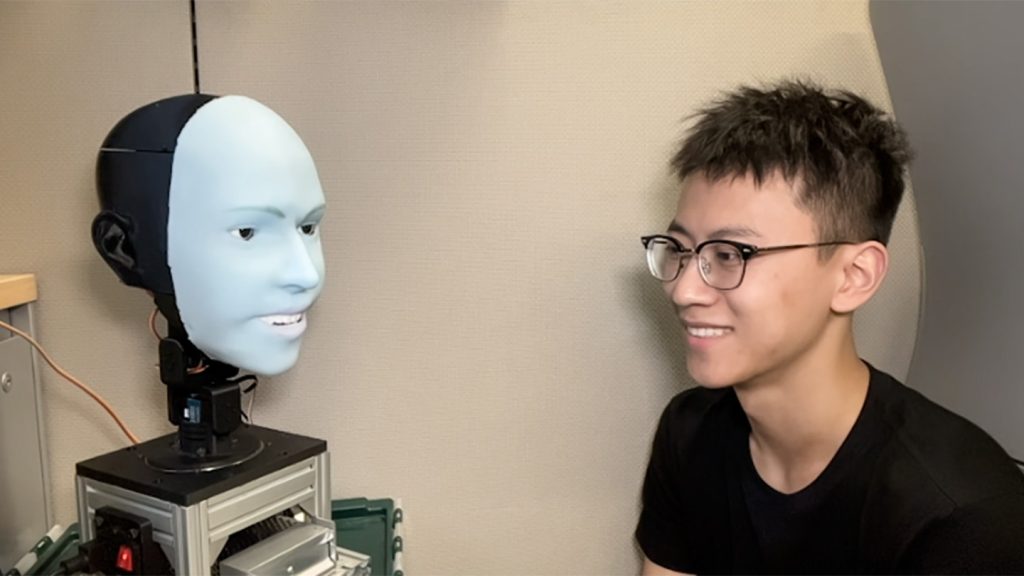Emo, a robot created by roboticists at Columbia University, has been programmed to synchronize its facial expressions with humans. Through the use of cameras in its eyes and 26 actuators in its soft blue face, Emo can mimic human expressions by analyzing subtle movements and predicting when a human will smile, frown, or raise their eyebrows before it happens. This ability to react in real time to human expressions is crucial for improving social interactions between humans and robots, as current robots often have noticeable delays in responding to human cues, leading to disappointment in users.
To train Emo to synchronize facial expressions with humans, researchers first exposed the robot to a variety of facial expressions through videos and random motor commands on the actuators. By analyzing hundreds of videos, Emo learned to recognize the relationships between actuating certain muscles in its face and creating specific expressions. In subsequent tests with other videos, Emo was able to predict human expressions accurately and replicate them in sync with humans more than 70 percent of the time, creating a more natural and engaging interaction.
Emo’s blue complexion and rubbery skin were intentionally designed to help the robot avoid the uncanny valley effect, where human-like robots evoke feelings of unease. By presenting Emo as a new species rather than a human imitation, users can view the robot as a unique entity, making it easier to interact with. Future upgrades to Emo, including integrating generative AI chatbot functionalities, could enhance its ability to communicate and engage with users, offering a more realistic and companionable experience.
Currently, Emo lacks voice capabilities, but incorporating advanced chatbot technologies could enable the robot to understand and respond to verbal cues from humans as well. By improving Emo’s lip movements and speech capabilities, the robot could become a more versatile companion, capable of providing company, sharing jokes, or engaging in conversations during late-night work hours. Enhancing these features would further bridge the gap between humans and robots, creating a more seamless and emotionally intelligent interaction between the two entities.


